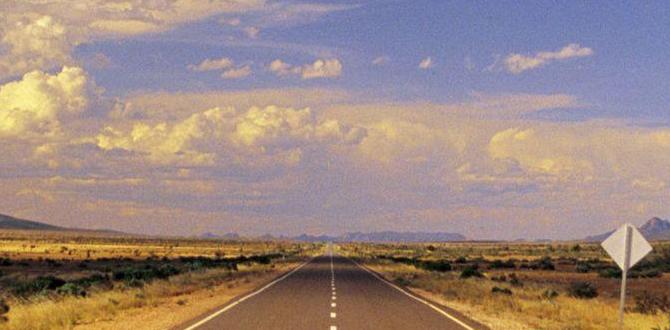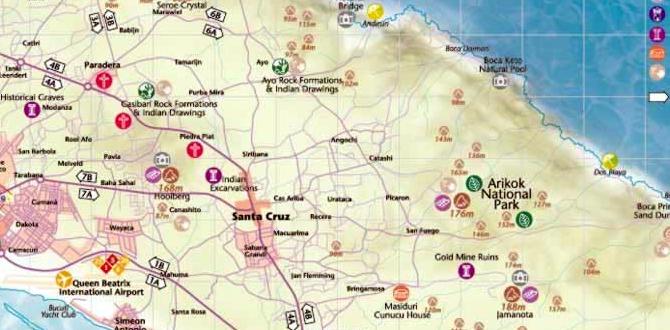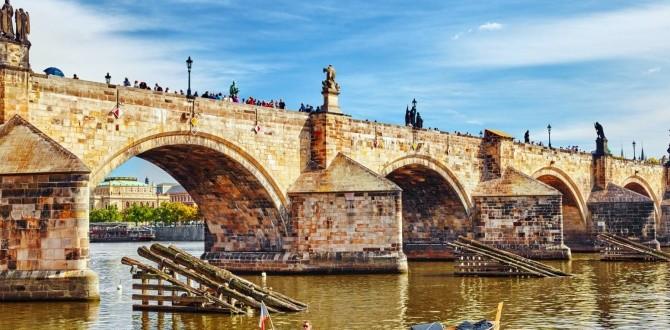Planning your first trip to the Atacama Desert? This guide offers essential, beginner-friendly tips for packing, staying comfortable, and making the most of your adventure in the driest non-polar desert on Earth. We’ll cover everything from sun protection and hydration to altitude sickness remedies and what to wear, ensuring a stress-free and unforgettable experience.
The Atacama Desert is a breathtaking destination, unlike anywhere else on Earth. Its vast, arid landscapes, star-filled skies, and surreal geological formations draw travelers from around the globe. But venturing into such an extreme environment for the first time can feel a little daunting. You might be wondering what to pack, how to stay comfortable, and how to navigate the unique challenges it presents. Don’t worry! This guide is designed to make your first Atacama experience smooth and enjoyable. We’ll break down everything you need to know, from essential gear to practical advice, so you can focus on the wonder of this incredible place.
Understanding the Atacama Climate: What to Expect
The Atacama Desert is famously dry, but ‘dry’ here reaches extremes. It receives very little rainfall, some areas seeing none for decades. This makes for stunning, stark beauty. However, the climate isn’t uniform across the entire region.
Temperatures can vary significantly throughout the day and night. Daytime highs can reach scorching levels, while nights can become surprisingly cold, especially at higher altitudes. The driest season generally runs from December to March, which is also summer in the Southern Hemisphere, offering warmer days. The cooler, but still very sunny, months between April and November are also popular. Regardless of when you go, the sun’s intensity is a constant factor.
Your Atacama Desert Packing Essentials
Packing for the Atacama Desert requires strategic thinking. The key is layering, sun protection, and preparedness for arid conditions. Think practical and comfortable.
Clothing: The Art of Layering
Because of the extreme temperature fluctuations, layering is your best friend. Start with a base layer that wicks away moisture, followed by insulating mid-layers, and an outer shell for protection against wind and the occasional dust devil.
- Base Layers: Lightweight, moisture-wicking tops and bottoms (synthetic or merino wool are excellent choices) to keep you comfortable and dry.
- Mid-Layers: Fleece jackets or lightweight down vests for warmth during cooler mornings, evenings, and higher elevations.
- Outer Layer: A windproof and water-resistant jacket is crucial. Even though it’s a desert, strong winds can pick up, and a shower, though rare, is possible.
- Bottoms: Comfortable, durable hiking pants or convertible pants that can turn into shorts are ideal. Avoid jeans as they are heavy and slow to dry.
- Tops: Several T-shirts and long-sleeved shirts made of breathable, sun-protective fabric. Long sleeves are highly recommended for sun protection.
- Footwear: Sturdy, broken-in hiking boots or comfortable walking shoes with good grip are a must for exploring varied terrains. Bring comfortable socks, preferably wool or synthetic to prevent blisters.
- Headwear: A wide-brimmed hat or a cap with a neck flap for maximum sun protection is non-negotiable.
- Eyewear: Sunglasses are essential to protect your eyes from the intense sun. Polarized lenses are a great option.
Sun Protection: Your Shield Against the Sun
The Atacama sun is incredibly strong due to the high altitude and lack of atmospheric moisture. Protecting your skin and eyes is vital to prevent sunburn and heatstroke.
- High SPF Sunscreen: Look for broad-spectrum SPF 50+ sunscreen. Reapply frequently, especially after sweating or swimming.
- Lip Balm with SPF: Your lips can burn too!
- After-Sun Lotion: To soothe any exposed skin after a day in the sun.
Hydration: More Than Just Water
Dehydration is a serious risk in the Atacama. You’ll need to drink more water than you’re used to. Carrying a reusable water bottle or hydration pack is highly recommended, and consider electrolyte supplements.
- Reusable Water Bottle/Hydration Pack: Essential for carrying sufficient water throughout your excursions.
- Electrolyte Tablets or Powders: These help your body rehydrate more effectively, especially in the dry, hot climate.
Health and Comfort Considerations
Beyond the basics, consider accessories that enhance your comfort and well-being, especially for longer days or if you have specific needs.
- Moisturizer and Hand Cream: The dry air can wreak havoc on your skin.
- Personal Care Items: Bring any personal hygiene items you rely on. For travelers who may experience temporary incontinence or prefer added security during long travel days or strenuous activities, portable continence aids like adult diapers or pull-up underwear can offer significant peace of mind and comfort. Brands like Depend or Tena offer discreet and absorbent options suitable for travel—a small but crucial item for some to ensure a stress-free experience.
- Small Backpack: For carrying essentials like water, snacks, sunscreen, and a jacket during day trips.
Altitude and Health: Staying Healthy and Safe
Many attractions in the Atacama Desert are at high altitudes, including the El Tatio Geysers, Lincancabur Volcano, and the Altiplanic Lagoons. Altitude sickness, or soroche, is a real concern for many visitors.
Understanding Altitude Sickness
Altitude sickness can cause headaches, nausea, fatigue, and dizziness. It’s your body’s reaction to lower oxygen levels at high elevations. The best prevention is to ascend gradually and stay well-hydrated.
Tips for Acclimatization
- Ascend Gradually: If possible, spend a day or two at a lower altitude (like San Pedro de Atacama, around 2,400 meters) before heading to higher elevations.
- Stay Hydrated: Drink plenty of water. Avoid alcohol and caffeine, which can dehydrate you.
- Eat Light Meals: Heavy meals can be harder to digest at altitude.
- Rest: Don’t overexert yourself on your first day at a higher altitude.
- Avoid Smoking: Smoking further reduces oxygen intake.
Remedies and Prevention
Many people find relief from altitude sickness through natural remedies or medication. Coca leaves (chewed or as tea) are a traditional remedy widely available and effective for some. Consulting your doctor before your trip about prescription medications like Acetazolamide (Diamox) is also a wise step for those prone to altitude sickness.
Medical Preparations
It’s always a good idea to pack a basic first-aid kit with essentials like pain relievers, band-aids, antiseptic wipes, and any personal medications you require. For travelers managing chronic health conditions or requiring specific personal care items, discreet and reliable products such as adult incontinence pads or briefs can be a lifesaver. Companies like Depend offer a range of products designed for comfort and discretion, allowing you to focus on enjoying your travels without worry. Ensure you pack enough for your entire trip, plus a little extra.
Must-See Attractions and Activities
The Atacama Desert offers a diverse range of unforgettable experiences. Here are some highlights:
Stargazing: A Celestial Spectacle
The Atacama is renowned for having some of the clearest night skies on Earth, making it a prime location for astronomical observation. The lack of light pollution and high altitude provide unparalleled views of the cosmos. Consider booking a guided stargazing tour for an enhanced experience, often including powerful telescopes and expert commentary. The European Southern Observatory (ESO) operates major astronomical facilities here, a testament to its world-class stargazing potential.
El Tatio Geysers
The third-largest geyser field in the world, El Tatio is most spectacular at dawn when the cold air meets the superheated steam rising from the earth. It’s located at a high altitude (4,320 meters), so acclimatization is crucial before visiting. Many tours offer breakfast and the chance to bathe in natural hot springs nearby.
Salar de Atacama
This immense salt flat is otherworldly, dotted with salt crusts and home to pink flamingos in its lagoons, particularly the Chaxa Lagoon. The vast white expanse under the intense blue sky is a photographer’s dream. The reflections in still water pockets are truly mesmerizing.
Moon Valley and Death Valley
These stunning geological formations, known as Valle de la Luna and Valle de la Muerte, offer dramatic landscapes resembling the moon’s surface. Famous for their sculpted sand dunes, salt formations, and breathtaking sunset views, they are easily accessible from San Pedro de Atacama.
Altiplanic Lagoons
These vibrantly colored high-altitude lakes—Miscanti and Miñiques—are nestled beneath volcanoes and are often visited in conjunction with the Salar de Atacama. The deep blues and greens of the lagoons, set against the stark volcanic landscapes, are incredibly scenic.
Practicalities for Your Atacama Adventure
Getting around and managing your practical needs will make your trip smoother.
Transportation
San Pedro de Atacama is the main tourist hub and a good base for exploring. From there, most excursions are done via guided tours, which often include transportation. Renting a car is an option, but roads can be unpaved and challenging, and a 4×4 is often recommended for venturing off the main routes. Companies like Hertz and Avis operate out of Calama, the nearest city with an airport.
Food and Drink
San Pedro de Atacama has a range of restaurants, from casual to more upscale. It’s advisable to drink bottled or purified water. Carry snacks and plenty of water on all day trips, as amenities can be scarce in remote areas.
Money Matters
The currency in Chile is the Chilean Peso (CLP). While credit cards are accepted in many establishments in San Pedro, it’s wise to carry some cash for smaller purchases, remote tours, or tips.
Connectivity
Wi-Fi is available in most hotels and some cafes in San Pedro, but it can be slow and unreliable. Mobile phone reception is spotty outside of town. Embrace the opportunity to disconnect and enjoy the natural beauty!
Frequently Asked Questions About the Atacama Desert
Is the Atacama Desert dangerous?
The Atacama Desert is generally safe for tourists. The primary concerns are environmental: extreme sun exposure, dehydration, and altitude sickness. By taking precautions such as using high SPF sunscreen, drinking plenty of water, acclimatizing to altitude, and following tour guide instructions, you can significantly mitigate these risks.
What is the best month to visit the Atacama?
The Atacama Desert can be visited year-round. The shoulder seasons (April-May and September-October) offer pleasant temperatures and fewer crowds. Summer (December-February) is warmer and drier, while winter (June-August) can be colder, especially at night, but the skies are often exceptionally clear.
How much water should I drink daily in the Atacama?
You should aim to drink at least 3-4 liters of water per day, and potentially more if you are active or it’s particularly hot. It’s crucial to hydrate constantly, even if you don’t feel thirsty, due to the arid climate and high altitude.
Are adult diapers necessary for the Atacama Desert trip?
Adult diapers or continence aids are not a necessity for everyone but can be a valuable comfort and confidence booster for individuals who experience light bladder leakage or want extra security during long excursions. They can provide peace of mind, especially on extended tours where restroom access might be limited or during activities like long bus rides. Many brands offer highly absorbent and discreet options suitable for travel.
Can you swim in the Atacama Salt Flats?
No, you cannot swim in the Salar de Atacama. The salt concentration is far too high, making it impossible to float like in the Dead Sea, and the water is not suitable for swimming. However, there are often opportunities to swim or bathe in natural hot springs associated with tours, such as near the El Tatio Geysers.
What should I wear to El Tatio Geysers?
For El Tatio Geysers, which is at a very high altitude and can be extremely cold before sunrise, layering is essential. Wear thermal base layers, warm fleece or down mid-layers, and a windproof, insulated outer jacket. Don’t forget a warm hat, gloves, and sturdy, warm shoes or hiking boots.
Is San Pedro de Atacama expensive?
San Pedro de Atacama can be considered moderately expensive compared to other parts of Chile, largely because it is a tourist-focused destination in a remote location. Accommodation, tours, and food can add up. However, there are options for various budgets, from hostels to higher-end hotels, and planning in advance can help manage costs.
Embrace the Atacama Adventure
Visiting the Atacama Desert for the first time is an incredible journey. By preparing wisely with the right clothing, prioritizing hydration and sun protection, and being mindful of altitude, you can wholeheartedly embrace the marvels this unique landscape offers. From the otherworldly valleys to the dazzling night sky, the Atacama promises an adventure that will stay with you long after you leave. Pack smart, stay safe, and get ready to be amazed by one of the most extraordinary places on our planet.




